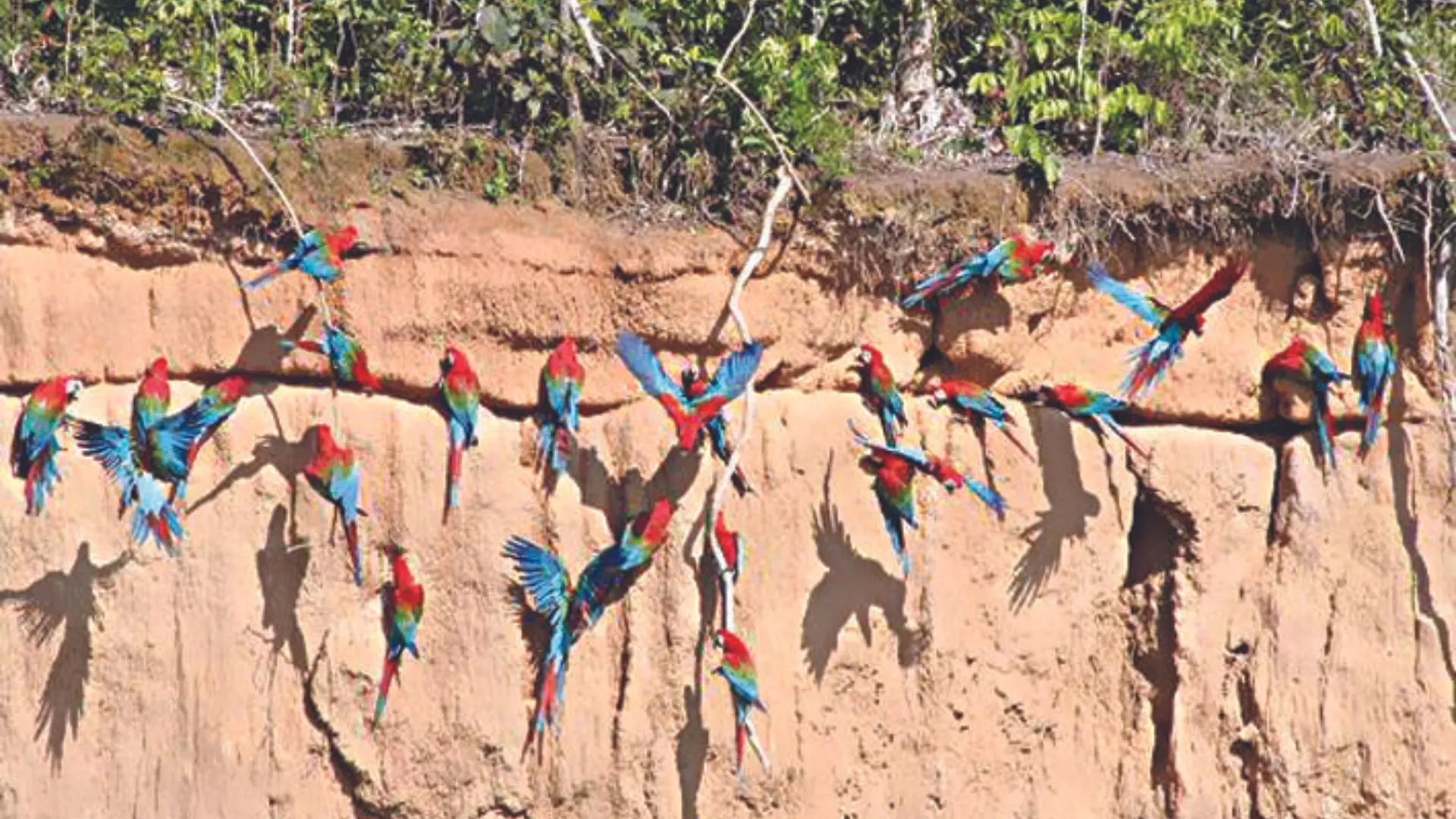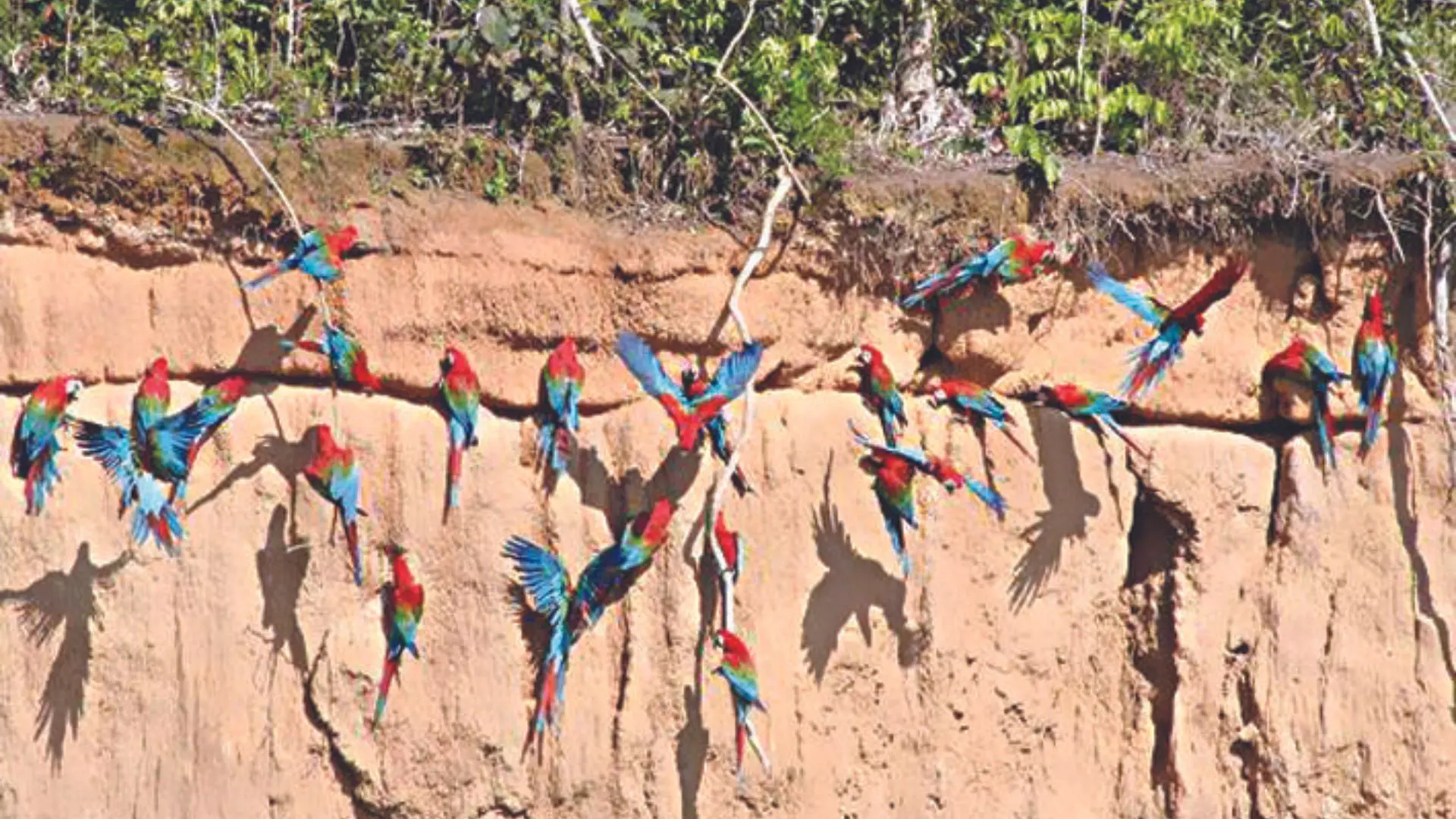
If you have seen a dog or cat eating grass in a garden or parrots eating clay, then you have witnessed wildlife self-medication and the healing power of Nature. A few months ago, photographs of a wounded orangutan in Indonesia chomping on the leaves of some Southeast Asian plant and then applying the plant juice on its wounded cheek baffled everyone. But within a month, the orangutan’s wounded cheek was healed. Dog parents are familiar with dogs eating grass when they have an upset stomach or rollover in grass and muck to tackle ticks and fleas. This fascinating self-treatment act demonstrates that when it comes to fighting parasites and disease, animals have their own DIY wisdom, known as ‘zoopharmacognosy’ or animal self-medication.
Jungle Clinic
Dr Renee Borges, an Indian evolutionary biologist and professor at the Centre for Ecological Sciences, Indian Institute of Science laments the scarcity of documented cases within Indian ecosystems, “There is a need for greater interdisciplinary collaborations between ecologists and chemists to understand the phenomenon in Indian wildlife. There is little research done till date.”
Dr Borges underscores the need for heightened awareness of chemical ecology. Her research, focusing on Indian Giant squirrels consuming clay to detoxify after ingesting fruit, exemplifies such behaviours while pointing out gaps in systematic study. She advocates for initiatives like those at the Indian Institute of Science and NCBS, aimed at fostering chemical ecology research and training among Indian ecologists. The video of a baboon chewing bitter leaves with deliberate intent went viral. Unbeknownst to the casual observer, the primate was practicing self-medication to combat flatworms that cause schistosomiasis, a parasitic disease. Wild wisdom passed from one generation to the other for several millennia!
Human Interference
Dr. Kanan Madaan, an army vet and animal behaviourist says that dogs often self-medicate for parasites by grooming, rolling in mud, or using medicinal plants. “However, when humans introduce chemical treatments, it can interfere with these natural behaviours. Topical flea treatments can irritate their skin and reduce grooming. It also discourages the use of natural remedies. This disruption can make dogs more reliant on chemicals and potentially lead to increased health issues,” Dr Kanan says.
Across the animal kingdom, creatures from lizards that gobble roots to ward off snake venom to parrots munching on clay to ease their indigestion have been showing off their natural flair for pharmaceuticals. Even bees are getting in on the act, buzzing about as they collect medicinal plants and minerals. Mother Nature knows best, even if she doesn’t come with a degree. From Tanzania’s chimpanzees using bitter Vernonia amygdalina to tackle gastrointestinal distress, to North American bears harnessing the antimicrobial properties of Osha root, the ingenuity of wildlife in finding remedies for ailments predates human civilization. The Capuchin monkeys anoint themselves with citronella and citrus to protect themselves against insect bites. Small surprise that people in India, and many other South Asian countries use citronella oil and citrus incense sticks to ward off mosquitoes and flies. Shirin Dhabhar, founder and Managing Director, Canines Can Care says that it is common to see dogs eat grass. She adds, “Some say it helps bind the toxins in the stomach and make an easy bolus to vomit, another theory is it irritates the stomach lining and causes the upsetting food to be vomited. It’s also a behaviour carried out by dogs when they lack fiber in their diet.”
Hidden Secrets
Recent studies reveal a gazillion of such behaviours: house sparrows and finches strategically lining their nests with high-nicotine cigarette butts to fend off mites, wood ants fortifying their colonies with antimicrobial resins from conifer trees, and monarch butterflies protecting their offspring from parasites by selecting anti-parasitic milkweed. Yet, amid these marvels, concerns loom over the fate of medicinal species as habitats shrink, climates shift…and humans interfere. The delicate balance of nature, finely tuned over millennia, faces unprecedented threats from human encroachment.
Dr Madaan cites another example of human interference, highlighting studies that emphasise how beekeepers often choose bees that deposit less resin because it is convenient, but this resin is crucial for combating parasites and diseases within the hive. By selecting for reduced resin deposition, beekeepers weaken the bees’ natural defences, resulting in higher rates of disease and parasitism.
Natural Healing
The convergence of traditional knowledge with modern scientific inquiry offers promising avenues for medical breakthroughs. This is exemplified by the knowledge among local tribal folks. Tribes in the Amazon forest observed capuchin monkeys using Heteropterys plants to treat intestinal issues. Scientific investigation revealed that these plants contain compounds with anti-parasitic properties, suggesting potential for the development of new treatments for gastrointestinal infections in humans. Borges stresses the importance of rigorous scientific validation in harnessing these insights for therapeutic purposes. Dr Borges says, “These are mostly observations, anecdotal evidence, experimenting is a challenge in itself.” Applying the study to human medicine, however, is difficult, Borges adds. “This is because most of these self-medicating efforts by animals “are not necessarily a cure, they are prophylactic (preventive).”
Throughout history, humanity has celebrated scientific and medical milestones, believing we can control nature. Yet, we now face climate change, antibiotic resistance, and biodiversity loss, reminding us of our vulnerability. Animals, often overlooked, may hold the key to future discoveries. They’ve self-medicated for ages, using nature’s pharmacy with skill. Instead of disrupting ecosystems, we should learn from these creatures. The greatest advancements may lie in harmonising with nature, not conquering it.
Jungle Clinic
• Dogs and cats eat grass when they suffer from indigestion as an emetic (a vomit-inducing substance) to relieve gut pain
• Indian giant squirrels consume clay to detoxify after ingesting fruit
• Parrots, lovebirds, and bats eat clay because it is filled with minerals and micronutrients like calcium, magnesium, zinc et al.
• Capuchin monkeys anoint themselves with citronella and citrus to protect themselves against insect bites
For instance, dogs often self-medicate for parasites by grooming, rolling in mud, or using medicinal plants.” — Dr. Kanan Madaan, Army vet and Animal Behaviourist
There is a need for greater interdisciplinary collaborations between ecologists and chemists to understand the phenomenon in Indian wildlife.” — Dr. Renee Borges, Evolutionary biologist & professor, IISc
